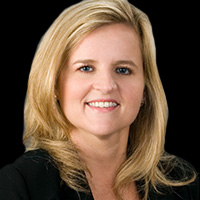Prevent Foreclosure By Improving Borrower Communication As Forbearance Ends
As 2021 ends, mortgage servicers are still helping borrowers impacted by COVID-19. Since the spring of 2020, borrowers with loans backed by federally sponsored programs have had the right to receive forbearance. In October, the Department of Housing and Urban Development (HUD), Federal Housing Administration (FHA), U.S. Department of Agriculture (USDA), and U.S. Department of Veterans Affairs (VA) extended the forbearance deadline, allowing borrowers to make the initial forbearance request until the COVID-19 National Emergency officially ends.
This means that servicers will be assisting borrowers in forbearance programs for the foreseeable future. Borrowers who were among the earliest beneficiaries are now approaching their 18-month deadline. Lenders are understandably concerned that forbearance programs ending will result in a foreclosure surge. ATTOM, a mortgage data firm, reported that foreclosure starts in Q3 2021 increased by 67% from the third quarter of 2020. Despite this increase, the number of new foreclosures is lower than average due to the historically low numbers of defaults in 2020.
The Consumer Financial Protection Bureau (CFPB) doesn’t want to see borrowers exiting forbearance wind up in foreclosure. Federal regulators will judge servicers based on the outcomes their borrowers experience after forbearance. To prevent costly foreclosures – and avoid unnecessary scrutiny from regulators – servicers need to communicate effectively to guide borrowers out of forbearance and back on track with their mortgage payments. Servicers must, for instance, contact borrowers 30 days before their forbearance period ends to discuss their repayment options. Missing this deadline is not an option.
Servicers can take several steps to improve communication and assist borrowers as forbearance ends.
Do More Than Call – Use Every Communication Channel
Lenders should begin their forbearance communications strategy by understanding the CFPB’s guidance and resources. The Bureau specifically emphasizes the importance of communication and recommends that servicers use multiple methods to communicate with borrowers.
The CFPB encourages using several channels—including self-service web-based tools and customer portals—to assist homeowners in identifying available loan assistance options for their circumstances. Some mortgage borrowers may be more comfortable interacting with their servicer via online services than by phone. Therefore, using technology to make it easy for them to find the information they need on their own should be a priority.
In addition to online tools, servicers can offer custom communication that includes videos and emails explaining borrowers’ options based on their loan type (e.g., FHA, VA, USDA, Fannie Mae, or Freddie Mac). Communications should also accommodate language preferences. Even the best educational information will not help borrowers if it’s written in a language they cannot understand.
Servicers should identify borrowers’ contact preferences in advance, so they deliver information in a convenient, timely manner.
Give Borrowers Tools for Success
Servicers are responsible for helping borrowers successfully exit forbearance and avoid foreclosure. To do this, servicers must explain borrowers’ options as forbearance ends. Servicers can leverage the interagency housing portal, which explains how forbearance programs work and provides an overview of many of the options available. The site offers a number of helpful resources for borrowers and servicers, including consumer-facing information about forbearance repayment obligations, available in multiple languages.
Use Mortgage Servicing Software and Web Applications to Improve Borrower Communication
The CFPB expects servicers to communicate effectively and proactively as forbearance ends. Fortunately, leading-edge mortgage servicing software can help servicers meet this expectation. Servicers need the right mortgage servicing software and effective self-service web applications to quickly deliver information to borrowers.
Servicers must have the ability to push out messages to borrowers through multiple channels while documenting and tracking the results. This will be critically important, both for helping borrowers achieve the best possible outcomes and for satisfying federal regulators.
Servicers need mortgage servicing software that enables them to:
- Automate emails to specific borrowers, notifying them that a statement or notice is ready for their review via the website. This software can also generate personalized messages that they can access in the web application portal. These personalized messages should appear in a pop-up window whenever the borrower logs into the web application. For example: “Your forbearance period will end on January 20, 2021. Please contact us to discuss your repayment options.”
- Reach out to borrowers electronically, for rapid communication, in addition to contacting them by mail. Servicers must follow the specific borrower contact requirements of the various regulatory agencies regarding notification of borrowers whose loans are exiting forbearance or entering foreclosure, of course. Servicing software makes it easy to comply with deadlines and reporting.
- Deliver real-time mortgage statements and other information to borrowers via web apps. By reducing routine phone calls from borrowers, servicers have more time to assist borrowers who are getting ready to exit forbearance or at risk for defaulting on their loan.
The right mortgage servicing software provides these capabilities. Servicers should examine their software to be sure it has essential communication-enhancing functionality. By improving communication with borrowers, servicers can help them avoid foreclosure as forbearance ends.

Susan Graham is president and chief operating officer of FICS (Financial Industry Computer Systems, Inc.), a mortgage software company specializing in cost-effective, in-house mortgage loan origination, residential mortgage-servicing and commercial mortgage-servicing software for mortgage lenders, banks, and credit unions. She can be reached at susangraham@fics.com.



